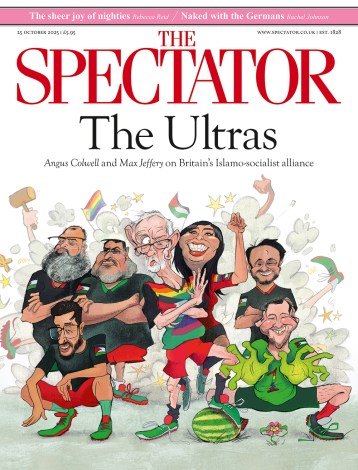
In what was intended as the opening line of a 1951 catalogue essay to an exhibition by the painter Leonor Fini, Jean Cocteau wrote: ‘There is always, at the margin of work by men, that luminous and capricious shadow of work by women.’ Not surprisingly, Fini excised it.
In what was intended as the opening line of a 1951 catalogue essay to an exhibition by the painter Leonor Fini, Jean Cocteau wrote: ‘There is always, at the margin of work by men, that luminous and capricious shadow of work by women.’ Not surprisingly, Fini excised it. But it was an attitude that would plague her, and other female artists in Paris’s Surrealist milieu, for the rest of her life. Women were never formally admitted to the Surrealist movement, with which Fini’s vast output between 1930-1990 is most readily identified.
Born in Buenos Aires in 1907, Leonor Fini, born Eleonora, spent her childhood in Trieste, raised by her half-Slavic mother and Turkish-cigarette-smoking aunts. Fini’s mother had run away from her father, Herminio Fini, a domineering Italian who made one botched kidnap attempt on his daughter. Leonor was allowed to haunt the morgue in her early teens, a renegade from school, and her youthful artistic attempts are not remarkable, although lively, spatially aware and capable.
Peter Webb points out that Trieste was polyglot and cosmopolitan. Fini’s uncle’s circle included James Joyce and a 40-year-old gay painter, Arturo Nathan, who befriended Fini and gave her a copy of Huysman’s A Rebours, and whose painting style she emulated. Travels with her mother took in Gustav Klimt, Giuseppe Arcimboldo and Egon Schiele in the galleries of Vienna.
Webb’s writing style is curious, often sounding as if it had been translated from another language, perhaps echoing transcripts of conversations with the artist. When, aged 24, Fini was invited to exhibit in Milan alongside de Chirico, the author wonders why she was so singled out: ‘Was it because of her beautiful appearance and sparkling personality, which would so soon captivate the avant-garde of Paris?’ The hagiographic (and, here, perplexingly sexist) tone cloys, although plenty of quotes support the very compelling effect that Leonor Fini had on both men and women. Moreover, her story is certainly fantastic.
At 24 she met an Italian prince and set off for Paris with him to start out as an artist. Having ditched the prince after a few months, this striking, black-eyed young woman quickly established herself as a painter and participator in the thick of Parisian artistic life and high society. Within months she had met the Noailles and the Montesquiou families, though Webb does not say how. One gets the impression that Fini kept no diaries, so such interesting details are often frustratingly hazy or absent. Christian Dior was running a gallery ‘before taking up haute couture’, and offered her a show.
She knew Elsa Schiaparelli, and at a party given by the designer Jacques Heim, met Max Ernst, who became her lover. It would almost be easier to list of the people Fini did not know. She sat on Picasso’s lap in a cab; she was friends with Salvador and Gala Dali, and for decades was photographed by Cartier-Bresson, Horst and Brassaï. Indeed, the photographs in this book, giving such a vivid sense of Fini’s fabulous, crazy, artistic life, where she poses often with one or two lovers, are the real stars, and far more exciting than her paintings.
For, while the paintings are numerous, they are repetitive and even oppressive. Fini’s themes, of Barbie-doll-figured women with a dreamlike version of the artist’s own face, touching each other up, or dominating recumbent men who have almost no musculature at all, surrounded by a walk-on cast of skulls, shells, bones, bark, ivy, insects, and other vaguely weird detritus, are generally undemanding, while the highly internalised catalogue of imagery is claustrophobic. Her portraits, done with speed and flair, are more than competent and occasionally vital, but set against plain backgrounds become formulaic en masse.
The book illustrations, however, are underplayed, for the light, quick hand and whimsy that often undermines apparently portentous full-scale canvases works brilliantly in illustration, with drawings that are sensual in a way that the paintings, despite generous amounts of flesh, breasts and, rarer, penises, are not.
Sphinx is the biography of a dominant woman who had all Paris at her feet, was much reviewed and who exhibited worldwide alongside great artists, but is now hardly known. Webb’s conjecture that her looks may have initially got her a show reflects the difficulty that women had in succeeding in what was widely acknowledged as a mysogynistic artistic environment. Fini was always included, applauded and remunerated, yet invariably sexualised, and by that marginalised — which infuriated her.
Her real talent was not painting but living, with tremendous vim, leaving a legacy that, as a social document, is important and impressive. As Webb says, of Fini and Jean Genet: ‘Both were difficult to classify, being marginal yet also central to French intellectual thought at the time.’





Comments